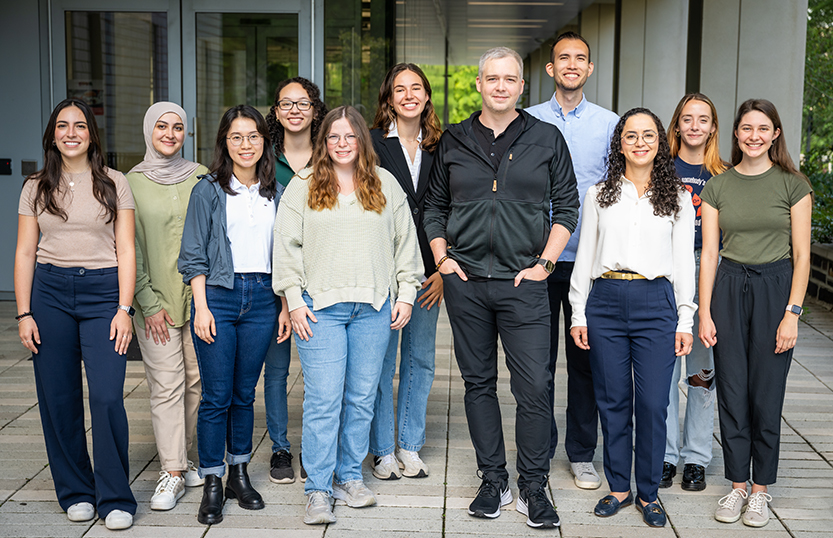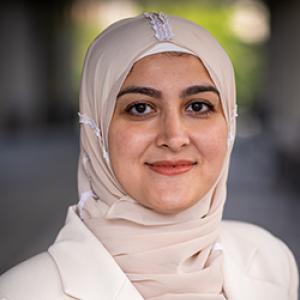Lab Description

Humans possess multiple biological systems that work to protect us from internal and external threats. Our somatosensory system provides us with the ability to sense temperature, touch, body positioning, and pain, both in our external environment and within our own bodies, enabling us to effortlessly interact with our environment and avoid stimuli which have the potential to cause us harm. Outside of the nervous system, our immune system protects us by surveilling our bodies for potential threats such as bacteria, viruses, and cancerous cells. Upon recognition of a foreign agent, our immune system catalyzes an inflammatory response to eliminate the threat.
These protective bodily systems (the somatosensory and immune systems) were classically viewed in isolation, studied in isolation, and are still often taught as systems which physiologically operate in isolation, but this is far from the physiological reality. In fact, a tight link between pain and inflammation has been appreciated for at least two millennia. The roman encyclopedist Aulus Celsus is credited as the first to document this link when he included dolor (pain) as one of the cardinal signs of inflammation (De medicina, c. A.D. 25). We are fascinated by the bidirectional relationship between pain and inflammation. Our lab studies the crosstalk between somatosensory neurons and non-neuronal cells such as immune cells, glia, cancer cells, and microorganisms, employing techniques that allow us to understand these interactions at the molecular, cellular, and organismal level. We believe this approach will allow us to develop new neurotherapeutics and immune-based therapeutics to treat chronic pain and pain-associated inflammatory diseases.
Research Projects
How do interactions between sensory neurons and non-neuronal cells impact pain, inflammation, and host immunity?
Sensory neurons in the peripheral nervous system are remarkable with respect to both their anatomical and functional properties. The cell bodies of these neurons (containing the nucleus) are localized to specialized structures termed ganglia, and each neuron extends both a long-ranging projection which innervates structures in the periphery as well as a central projection to higher-order neurons in the CNS. At each specialized cellular compartment (e.g., peripheral terminal, soma, and central terminal), peripheral sensory neurons interact with distinct non-neuronal cell types such as immune cells, glial cells, cancer cells, and even microorganisms. Our lab is working to understand the mechanisms and physiological functions of these cellular interactions, with a particular interest in understanding 1) how sensory neurons contribute to inflammation and host immunity through immune cell modulation and 2) how immune cells influence the properties of sensory neurons to modulate pain in health and disease states.
One characteristic of immune cells that enables them to recognize potential threats and mount an inflammatory reaction is their abundant expression of pattern recognition receptors (PRRs), specialized receptors which detect molecules produced by microorganisms and damaged/aberrant host cells. Interestingly, peripheral sensory neurons also exhibit high expression of many PRRs, as well as receptors for small immunomodulatory proteins called cytokines and chemokines. In the peripheral sensory neurons that respond to painful stimuli (nociceptors), the activation of these cytokine signaling pathways can alter neuronal excitability through a rapid noncanonical mechanism which involves ion channel modulation. Our lab is working to understand how these atypical signaling pathways function in neurons, and how activating or inhibiting them can affect pain, inflammation, and host immunity in different health and disease contexts.
What factors determine whether an individual develops chronic pain?
Pain is frequently regarded as a symptom, but in many cases chronic pain is the sole (or primary) complaint and does not occur secondary to another underlying disease or ailment. These chronic pain syndromes are classified as chronic primary pain conditions (CPPCs), a category which includes many conditions such as fibromyalgia, complex regional pain syndrome, and some types of headache and musculoskeletal pain disorders (e.g., temporomandibular joint disorders). Unfortunately, these CPPCs have a remarkable tendency to co-aggregate within individuals, with estimates suggesting >80% of chronic pain patients have more than one comorbid pain condition. Given this stark reality, our lab is working to identify the biological factors that increase an individuals’ predisposition to develop chronic pain (e.g., vulnerability factors), as well as the protective factors that allow some individuals to resolve their pain after an injury (e.g., resilience factors). To this end, we are studying the molecular and cellular changes that occur in the somatosensory system and the immune system in chronic pain patients. We employ a combination of preclinical models which mimic chronic pain pathogenesis in humans and translational studies using biofluids and tissues procured from humans who have generously volunteered to participate in clinical research studies.
Much of our ongoing work is focused on understanding the biological factors that contribute to chronic pain pathogenesis in temporomandibular joint disorders (TMDs), a musculoskeletal pain condition representing the most common orofacial pain condition, and one that frequently occurs comorbid with other CPPCs. We are analyzing both local (e.g., within the temporomandibular joint tissues) and systemic changes in the molecular, cellular, and functional properties of sensory neurons and immune cells to identify factors that impact TMD pain, comorbidity with other CPPCs, and clinical outcomes. In addition, we are studying the protective and maladaptive factors that impact neuroinflammation and pain resolution in neuropathic pain states (e.g., nerve injury and chronic post-amputation pain).
Our Approach & Techniques
We pursue our research questions using both forward translational and reverse translational approaches. Using preclinical models, we can mimic many aspects of disease progression seen in humans and employ molecular genetic and pharmacological strategies to manipulate the signaling pathways and cell types involved, allowing us to characterize how this impacts chronic pain, inflammation, or immunity using a combination of in vitro and in vivo assays. We have expertise using conditional and intersectional genetic techniques to knockout genes, ablate specific cell populations, and activate or inhibit specific neuron subpopulations. We can characterize the outcomes of these manipulations using standard molecular/biochemical approaches and techniques such as behavioral phenotyping, calcium imaging, 3D in vivo bioluminescent imaging, multispectral and super-resolution confocal microscopy, single cell transcriptomics, and flow cytometry and FACS. For our reverse translational research studies, we perform a variety of proteomic, transcriptomic, and multi-omic analyses on biofluids, cells, and tissues procured from humans whose clinical outcomes we frequently follow over time. This data-centric approach helps us identify the molecules, cells, and signaling pathways that are of greatest interest to explore and validate using our preclinical models.










